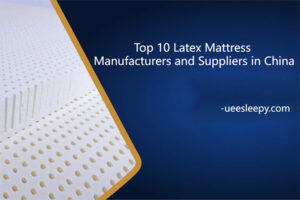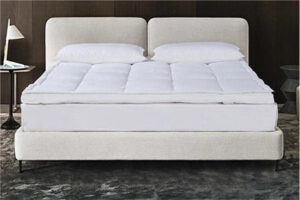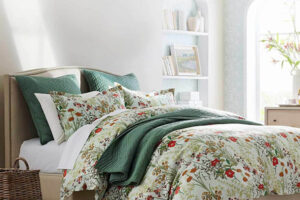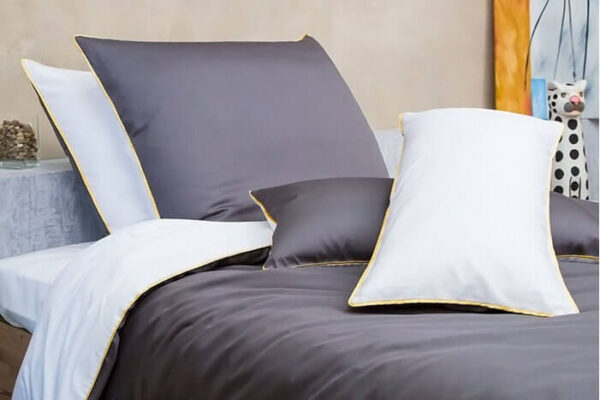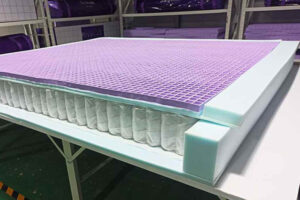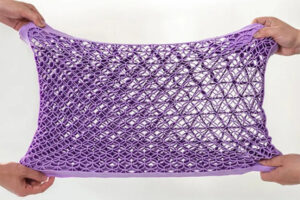If you look at one of the foundations of a relaxing and restful night’s sleep, you’re sure to find sheets on your list. This bedding manufacturer guide will help you.
There is no doubt that quality sleep is extremely important to you as it determines how energetic and active you are throughout the day. Sheets have been shown to be especially helpful in achieving good and proper sleep. It is undeniable that they not only make you feel comfortable but also give your room a new look.
1. What is bedding?
Bedding is a flat weave textile with no counterflow. It is the replaceable and washable part used on the mattress, also known as bedding or bedding. It is used for various purposes such as keeping warm, and hygienic, protecting the mattress, increasing the lifeline of the mattress, and enhancing the decorative effect. A bedding set includes a flat sheet, blanket or duvet, pillowcase, and more.
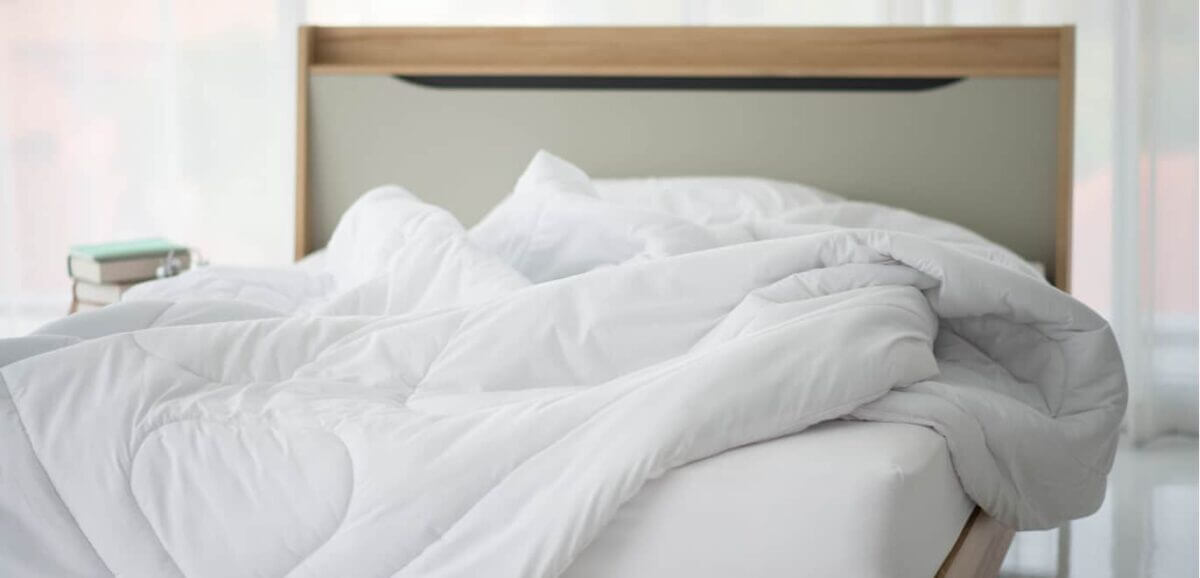
2. History of bedding
A comprehensive study of history strongly suggests that bedding evolved a lot in Egypt. During the Ancient Egyptian and Ancient Greek periods, mattresses and bedding were mainly made from natural materials such as grass, feathers, or flax, and were used to provide comfort and warmth.
During the medieval period, the aristocracy began to use more luxurious bedding such as silk and velvet, while the common man used straw or feather-filled mattresses and linen sheets. As the Industrial Revolution progressed, the production of bedding became more widespread and diversified, with an ever-expanding selection of fabrics and filling materials. By the end of the 19th century, the basic forms of modern bedding, such as sheets, quilts, and pillows, took shape and became widely popular.
3. Raw materials used by bedding manufacturer
One of the main raw materials used by bed sheet manufacturers is cotton. To do this, cotton is spun into yarn in bed sheet factories. Because absorbent cotton has fluff like wool, it is often called absorbent cotton. In raw form, raw cotton is still not fully purified and contains leaves, seeds, twigs, and other debris.
Sheet makers also use other materials in the weaving process, such as starch, to ensure that threading through cotton becomes easier. After the wool has been woven, bleach and harsh chemicals (such as hydrogen peroxide solutions and bleach) are used in the cleaning and bleaching process. This is done to ensure all color is removed prior to the dyeing process. For the dyeing process, chemically derived dyes are used to achieve color fastness and standard coloration. These dyes have been approved by their respective governments before being used by bedding manufacturers.
4. Manufacturing process of bedding
Often, there are different processes such as spinning bales delivered to the manufacturer or buying yarn already spun on bobbins. However, this section includes the process of making sheets from cotton bales. Keep in mind that the cotton bales used in the process mentioned below have not yet been spun.
Here is the process of making bedding:
Step 1: Acquire Cotton
Step 2: Mix Cotton
Step 3: Carding the Cotton
Step 4: Drawing, Testing, and Boating
Step 5: Spin Cotton
Step 6: Twist Section Beam
Step 7: Cut
Step 8: Weaving
Step 9: Overall cleaning and bleaching process
Step 10: Dyeing
Step 11: Cutting
Step 12: Sewing
Step 13: Packaging the Final Product

5. Overall quality control of bedding manufacturer
Bedding manufacturers must carefully select high-quality cotton bales. Quality (grade) and length (fiber) are used to sort bales. Longer staples are used for quality products and shorter staples are used for batting.
In general, sheet manufacturers classify cotton using several grades, which range from fair to good classification. Because low-grade cotton (cotton with residue and impurities) slows down the processing of cotton into spool yarn and affects quality, bedding manufacturers have to be very picky about cotton grades. That’s why major bedding makers buy bales of cotton after extensive private or government testing. All in all, ensuring that quality is not compromised and producing the best bedding possible.
6. How to choose a bedding manufacturer?
Based on the above preliminary understanding of production and raw materials, when choosing a bedding manufacturer, you can consider the following aspects:
1) Clear your needs and budget
First, clarify your needs, including the type of product you need (such as pure cotton, silk, linen, etc.), color matching, pattern style, and size specifications. At the same time, set a reasonable budget range. There is no guarantee that a high price will lead to high quality. Cost-effectiveness is often a wiser choice.
2) Research manufacturer background and strength
- Brand history and reputation: Check the manufacturer’s establishment time, development history, and market reputation. Manufacturers with a long history often have accumulated more production experience and technical advantages.
- Production scale and equipment: Understand the manufacturer’s production scale, the number of production lines, and the production equipment used. Modern production equipment can ensure the product’s process accuracy and production efficiency.
- Raw material procurement: High-quality raw materials are the basis for producing high-quality bedding. Ask the manufacturer about the source of raw materials, quality control measures, and whether environmentally friendly materials are used.
3) Product quality and details
- Fabric texture: Touch or view samples to feel the softness, breathability, and wear resistance of the fabric. High-quality fabrics are not only comfortable to the touch, but also effectively extend the life of the product.
- Craftsmanship level: Observe the sewing process of the product, such as thread end treatment, pattern printing clarity, whether the edge hemming is smooth, etc. Fine craftsmanship can improve the overall grade and durability of the product.
- Color and pattern: Choose the appropriate color and pattern according to your personal preferences and home decoration style. At the same time, pay attention to details such as whether the pattern is symmetrical and the color is uniform.
- Design innovation capability: In an environment where market competition is increasingly fierce, design innovation capability has become one of the important factors that distinguish manufacturers. Choose manufacturers that can keep up with fashion trends and continuously launch new designs.
- Price and cost-effectiveness: Price is a factor that cannot be ignored when choosing a manufacturer. Consider price, product quality, delivery time, after-sales service, and other aspects comprehensively, and choose the manufacturer with the highest cost-effectiveness. Avoid simply pursuing low prices so as not to affect product quality.
- After-sales service: Good after-sales service can promptly solve any problems that may arise later. Choose manufacturers that provide return, exchange, repair, and maintenance services to ensure the stability of long-term cooperation.
By considering the above aspects, you can better choose the right bedding manufacturer to ensure the stability of product quality and service.
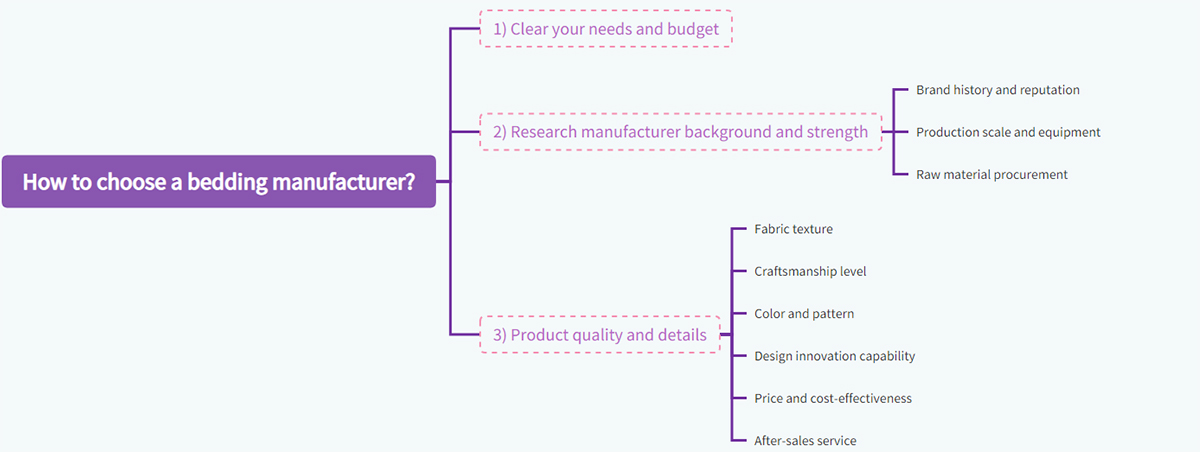
7. How to negotiate with bedding manufacturers?
When negotiating with a bedding manufacturer, understanding the needs and expectations of both parties is key to success. Next, we’ll explore some effective negotiation strategies to help you achieve the best possible results in your partnership.
- Market research: First, conduct market research to understand current market demands and trends so that you can position your products more accurately. Understanding the needs of your target customer groups, whether it is a hotel, home furnishing store, or e-commerce platform, can help you better meet their needs.
- Choosing a supplier: Choosing a reputable supplier is key. For example, brands like Ueesleepy have guaranteed product quality and can provide a stable supply.
- Detailed communication: Communicate with suppliers in detail to understand their product lines, wholesale policies, and pricing systems. This will help you better plan your procurement strategy.
- Determine purchasing strategy: Determine the types of bedding to be wholesaled, such as sheets, quilt covers, pillowcases, etc., and make choices based on market demand and customer preferences.
- Negotiate minimum order quantity and price: Negotiate the minimum order quantity and price with suppliers to ensure that the inventory is neither too much nor too little while striving for the best wholesale price.
- Clarify contract terms: The procurement process will be smoother if delivery time, payment method, return and exchange policy, and other details are clarified.
- Signing a contract: Sign a formal wholesale contract and arrange logistics distribution to ensure that the products are delivered to the destination safely and promptly, and provide comprehensive after-sales service.
Negotiation skills and considerations:
- Understand policies: During negotiations, understanding and utilizing government procurement policies, such as those specifically targeting small and medium-sized enterprises, can help you gain more benefits and support.
- Be fully prepared: Be fully prepared before the negotiation, understand the supplier’s products, prices, services, and other information, and formulate clear procurement requirements and budgets.
- Communication skills: Be polite and professional during negotiations, clearly express needs and expectations, and also listen to suppliers’ opinions and suggestions.
- Contract details: Before signing a contract, carefully review the contract terms and ensure that all details meet the expectations and needs of both parties.
By following the above steps and tips, you can effectively negotiate with bedding manufacturers to ensure that the purchasing process is smooth and cost-effective.
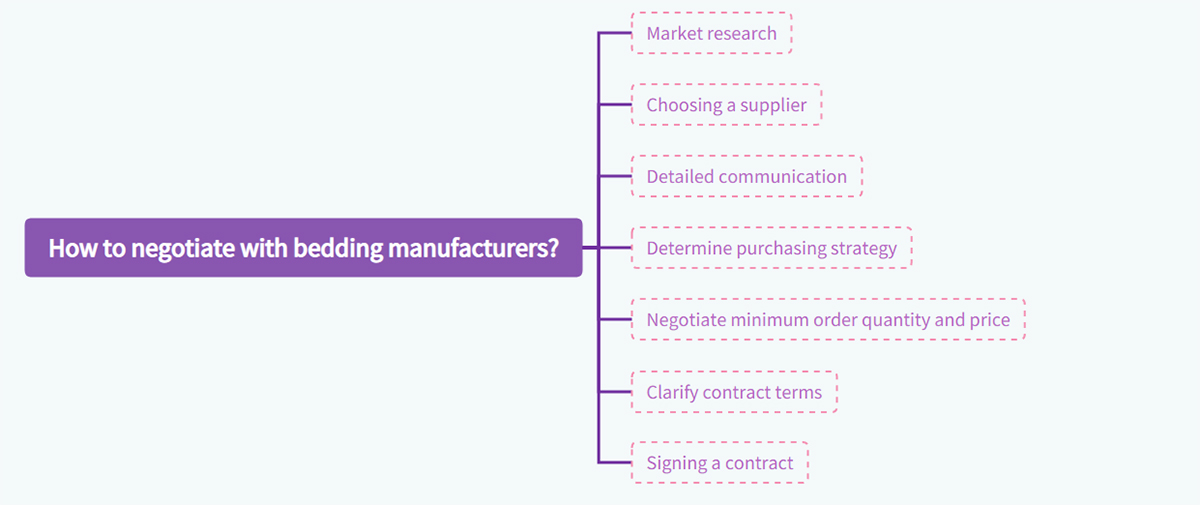
8. Conclusion
In general, choosing a suitable bedding manufacturer requires comprehensive consideration of multiple factors, including product quality, manufacturer reputation, production capacity, delivery cycle, and price. High-quality manufacturers can not only provide comfortable and durable bedding but also ensure timely delivery and good after-sales service.
Through in-depth research and field visits, understanding the manufacturer’s production process, technical level, and market feedback can effectively avoid potential risks and ensure the accuracy of procurement decisions and the stability of long-term cooperation. Therefore, when making a choice, it is recommended that buyers pay more attention to the comprehensiveness of quality and service in addition to price to ensure that consumer needs are met and market competitiveness is enhanced.
How useful was this post?
Click on a star to rate it!
Average rating 5 / 5. Vote count: 4
No votes so far! Be the first to rate this post.

